The wines of the Malaga region are more than just sweet and fortified – the obligatory bottle of souvenir. Known for its orchards, Axarquía is on its way to becoming one of Spain’s top quality wine regions.
Located between the town of Malaga and the Sierra Nevada, La Axarquía is one of Spain’s most productive orchards thanks to its subtropical climate. The valleys of the Axarquía allow the cultivation of tropical species; forests of kiwifruit and mango trees give the landscape a fresh greenery, quite different from what is usually found in Andalusia.
Vines have existed in Axarquía for several hundred years, but their harvest has been turned into raisins, considered by Spaniards to be the best in their country and even in the world. In fact, the raisin production and all the hype surrounding it has been so intense that Axarquía has a 62-kilometre-long ‘Ruta de la Pasa’ or Raisin Route, a bit like the wine regions have their own scenic routes that wind through the hills and small villages. With all this raisin enthusiasm and the money to be made from it, wine has been forgotten – until these days.
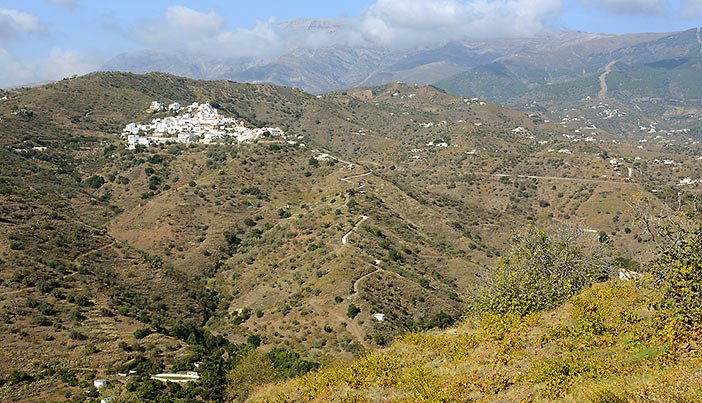
Malagas wines’ journey from sweet to fresh
Malagas wines don’t immediately ring bells, but every humble kneeler to communion has had a taste of this raisin tasting, thickly sweet style of wine. Indeed, the Finnish Lutheran Church is a club card customer of Malaga’s wine houses. However, I don’t recall that many people would have named communion as their best wine experience.

The communion wines are the traditional Malaga fortified wine style, based on the old D.O Malaga quality classification. As it was recognized that the world’s tastes were changing towards a drier and fresher style a day ago, a new D.O. Sierras de Málaga was created in 2001, based on the previous one, which allowed the cultivation of world-famous varieties using today’s methods.
Bodega Jorge Ordoñez and Austrian reinforcement
Spanish wine-hidalgo Jorge Ordoñez wanted to test the potential of Axarquía and in 2004 set up a winery in the region, together with the world-famous Austrian Kracher wine family.
Jorge Ordoñez’s vineyards are located on steep, rocky slopes at altitudes of up to 700m, and are harvested with the help of donkeys at harvest time, as machines are not accessible to the vines. The pear is Muscat Alejandría, which is used to make the Botani Moscatel Seco, which has already caused a stir around the world.
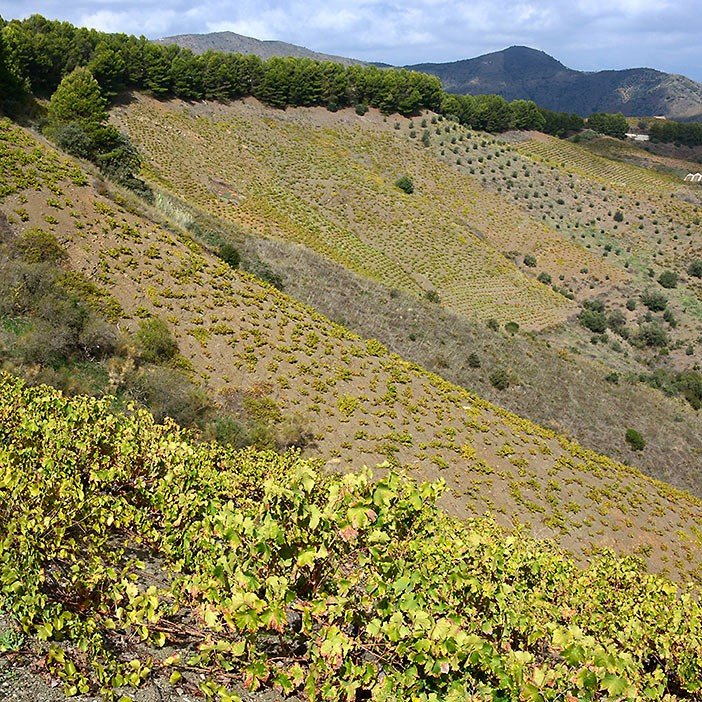

Bodega Jorge Ordoñez also produces sweet wine, but in an updated style. The No. 2 Victoria 2012, made from Moscatel, has shaken off 99 points from the Gourmet Guide and even dared to be served at Queen Elizabeth II’s 88th birthday party.
Bodega Jorge Ordoñez wine tasting
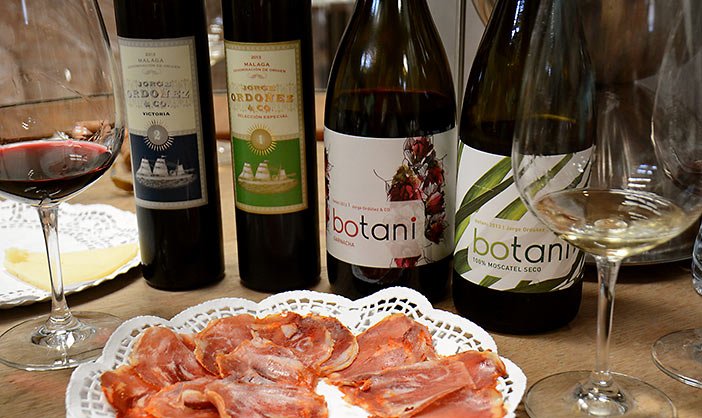
Botani Moscatel Seco 2012
A very aromatic nose with citrus, herbs and floral notes. Elegantly balanced, the wine has a fresh acidity and a pleasant structure. Very personal, but an excellent wine for its price.
Botani Garnacha 2012
Made from Garnacha grown in Ronda, this wine is typical of the region in terms of aroma; dark fruity and clean and fresh. There is also acidity and plums on the palate, which gives way to a tannic and long finish.
Nº2 Victoria 2012
This oak-aged wine has dimensions of apples, citrus and herbs. A perfect marriage of sweetness and acidity. The long, sloping finish is like a bride’s silky laurel. A truly dazzling wine.
Nº1 Selección Especial 2012
Gathered from older vines, this wine is like the one above, but with a rootier, more intense aromatics. The sweetness is also more pronounced. A great wine. Robert Parker’s Wine Advocate awarded 95 points.
www.jorgeordonez.es
Bodegas Bentomiz – elegant personality

Dutch couple Clara Verheij and André Both moved to Andalusia back in 1995 to teach and build, but soon their shared passion for wine proved irresistible. They gradually gave up other pursuits from 2003 onward to concentrate on wine production.
Bodegas Bentomiz has only 1.5 hectares of its own vineyards, but with contract growers it has about 40 hectares more. Annual production is 55 000 bottles and the aim is to increase this to 100 000 bottles in the next few years. This will of course require more land and new plantings. In addition to the new vines, the farm has vines that are up to 80-90 years old.
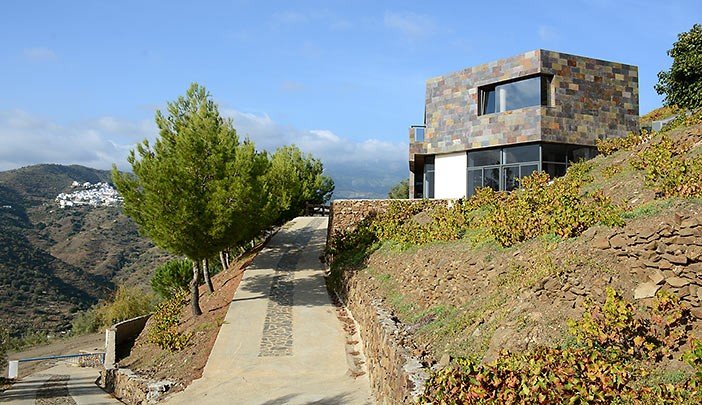
The estate produces wines from a few varieties; Moscatel de Alejandría, Tempranillo, Petit Verdot, Merlot and Axarquía’s own specialty – Romé. The latter rose is said by MV Julia Harding to be half a point away from being the best rose wine made in Spain.
Bodegas Bentomiz wine tasting
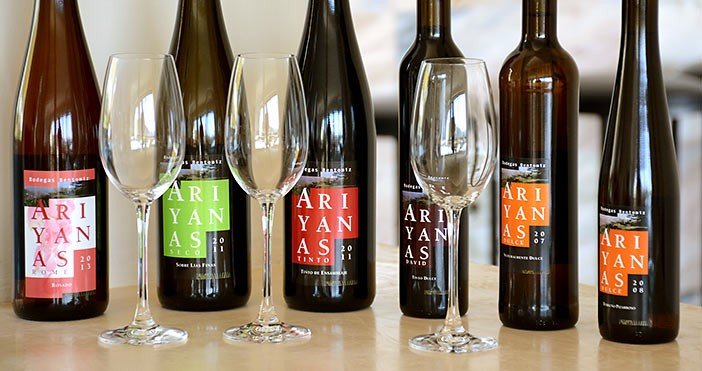
Romé Rosado 2013
Peach and flowers. Fresh, clean, elegant and balanced. Indeed, a unique rose.
Seco Sobre Lías Finas 2012
Pineapple, tropical, peach and anise. Unbelievably fine aromas. Dry, acidic and clean on the palate. Fresh and long. A very interesting white wine.
TINTO DE ENSAMBLAJE 2012
Dark fruit, roasted. Smoke, earth and marzipan. Cherry and youthful on the palate. Well balanced and silky. Not yet drinkable, but becoming a great wine.
DAVID TINTO DULCE 2012
Fruity aroma. Cherry, plum and flowers. Slightly toasty on the palate with an acidic freshness. Very good sweetness (124g/l). Excellent.
NATURALMENTE DULCE 2008
Ripened fruit, pineapple. Elegant and delicious sweetness. Balanced acidity. Fresh and clean.
TERRUÑO PIZARROSO
Tropic and pineapple. Deep roasted aromas, like almonds. A really long and gorgeous finish.
www.bodegasbentomiz.com
Text and photos: Janne Suomi
This post is also available in:
Suomi

